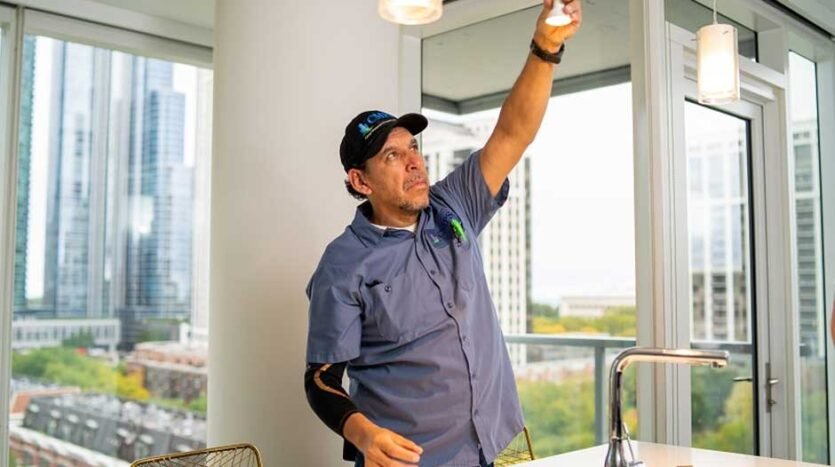How to Handle Property Maintenance as a Landlord
Being a landlord comes with many responsibilities, and one of the most crucial is property maintenance. Keeping your rental property in good condition is not only important for the longevity of the building but also for ensuring tenant satisfaction and legal compliance. Whether you manage a single flat or a portfolio of homes, understanding the best practices for property maintenance will help you run your rental business smoothly. For landlords in areas with growing tenant expectations—such as those advised by Saffron Walden estate agents—staying ahead of maintenance issues is a smart way to protect your investment.
1. Understand Your Legal Obligations
Before tackling any property maintenance tasks, it’s essential to know your legal responsibilities as a landlord. In the UK, you are legally required to ensure your property is safe and habitable. This includes:
- Maintaining the structure and exterior of the property (e.g., roofs, walls, windows).
- Ensuring the supply of water, gas, electricity, and sanitation is functional and safe.
- Keeping heating and hot water systems in working order.
- Meeting fire safety regulations, especially if the property is a House in Multiple Occupation (HMO).
Failure to meet these obligations could lead to fines, legal action, or even being banned from renting properties.
2. Be Proactive, Not Reactive
One of the most common mistakes landlords make is waiting until something breaks before taking action. Reactive maintenance often leads to higher repair costs and unhappy tenants. Instead, adopt a proactive approach by scheduling regular inspections and servicing.
Routine inspections help you identify issues early—such as minor leaks, mould, or wear and tear—before they escalate into costly problems. Consider carrying out inspections every six months or at tenancy renewals. Be sure to give proper notice (at least 24 hours) before entering the property.
3. Create a Maintenance Schedule
A maintenance schedule is a simple yet effective way to stay on top of essential tasks throughout the year. Break the schedule down by season:
- Spring: Check gutters, inspect roofing, service the boiler.
- Summer: Test smoke and carbon monoxide alarms, inspect windows and doors.
- Autumn: Clear leaves from drains, check for damp, inspect external walls.
- Winter: Ensure pipes are insulated, check heating system, respond quickly to weather-related damage.
Having a checklist ensures nothing is overlooked and helps you budget for routine upkeep.
4. Build a Network of Reliable Tradespeople
Every landlord needs a good team of professionals they can rely on for repairs and emergencies. Trying to find a plumber or electrician at short notice can lead to delays or unqualified workers.
Start by building a list of trusted tradespeople—plumbers, electricians, handymen, gas engineers, roofers, and decorators. Use recommendations from local landlords or check platforms that verify qualifications and reviews. Establishing relationships with these professionals early will save time and stress when urgent issues arise.
5. Encourage Tenants to Report Issues Promptly
Your tenants are your eyes and ears when it comes to spotting maintenance problems. Make it easy for them to report issues by setting up a straightforward communication channel—whether that’s through email, phone, or a property management app.
Respond quickly to all maintenance requests, even if the problem seems minor. A prompt response shows professionalism and encourages tenants to stay vigilant about future problems. Also, keeping a written log of all reported issues and how they were resolved is useful for both record-keeping and legal purposes.
6. Budget for Repairs and Maintenance
One of the best ways to avoid financial strain is by setting aside a portion of your rental income for property upkeep. A general rule of thumb is to save around 1% of the property’s value each year for maintenance. For example, if your property is worth £250,000, try to set aside £2,500 annually.
Having a maintenance fund means you won’t be caught off guard when the boiler breaks down or the roof starts leaking. It also allows you to invest in preventative maintenance, which can be more cost-effective over time.
7. Use Property Management Software
If you manage multiple properties or simply want to stay organised, consider using property management software. These tools help track inspections, schedule repairs, manage tenant communications, and store records in one place.
Many platforms also offer maintenance request features where tenants can upload photos or details of the problem, making it easier for you to assess the issue before calling a tradesperson.
8. Consider Hiring a Property Manager
If handling maintenance becomes overwhelming, especially if you’re a hands-off investor or live far from the property, hiring a property manager can be a wise decision. They take care of all aspects of property upkeep—from scheduling repairs to handling emergencies—giving you peace of mind.
While this comes at a cost, it can be worth it for the time saved and the assurance that professionals are looking after your property.
Final Thoughts
Proper property maintenance isn’t just about fixing things when they go wrong. It’s a long-term strategy to protect your investment, keep your tenants happy, and comply with legal responsibilities. By being proactive, staying organised, and building a solid support network, landlords can manage maintenance efficiently and effectively. Whether you’re just starting out or looking to improve your existing processes, taking property upkeep seriously is one of the smartest moves you can make as a landlord.


